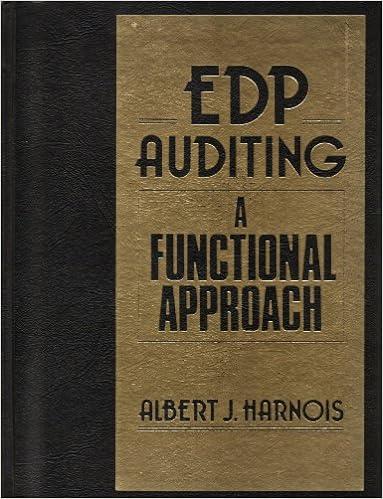Answered step by step
Verified Expert Solution
Question
1 Approved Answer
The answer shown is: Cost of Leasing = $637,702 ; Cost of Owning = $713,300. Please help! Challenging Problem 5 19-5 Lease versus Buy Sadik
The answer shown is:
Cost of Leasing = $637,702 ; Cost of Owning = $713,300.
Please help!

Challenging Problem 5 19-5 Lease versus Buy Sadik Industries must install $1 million of new machin- ery in its Texas plant. It can obtain a bank loan for 100% of the required amount. Alternatively, a Texas investment banking firm that represents a group of investors believes it can arrange for a lease financing plan. Assume that the following facts apply. (1) The equipment falls in the MACRS 3-year class. (2) Estimated maintenance expenses are $50,000 per year. (3) The firm's tax rate is 34%. (4) If the money is borrowed, the bank loan will be at a rate of 14%, amor- tized in three equal installments at the end of each year. the Chapter 19 Lease Financing (5) The tentative lease terms call for payments of $320,000 at the end of each year for 3 years. The lease is a guideline lease. (6) Under the proposed lease terms, the lessee must pay for insurance, property taxes, and maintenance. (7) Sadik must use the equipment if it is to continue in business, so it will almost certainly want to acquire the property at the end of the lease. Ifit does, then under the lease terms it can purchase the machinery at its fair market value at that time. The best estimate ofthis market value is $200,000, but it could be much higher or lower under certain circumstances. To assist management in making the proper lease-versus-buy decision, you are asked to answer the following questions. a. Assuming the lease can be arranged, should the firm lease or borrow and buy the equipment? Explain. (Hint: In this situation, the fim plans to use the asset beyond the term of the lease. Thus, the residual value becomes a cost to leasing in Year 3. The firm will depreciate the equipment it purchases under the purchase option starting in Year 3, using the MACRS 3-year class schedule. Depreciation will begin in the year in which the equipment is purchased, which is Year 3.0 b. Consider the $200,000 estimated residual value. Is it appropriate to discount it at the same rate as the other cash flows? Are the other cash flows all equally risky? (Hint: Riskier cash flows are normally discounted at higher rates, but when the cash flows are costs rather than inflows, the normal procedure must be reversed.)
Step by Step Solution
There are 3 Steps involved in it
Step: 1

Get Instant Access to Expert-Tailored Solutions
See step-by-step solutions with expert insights and AI powered tools for academic success
Step: 2

Step: 3

Ace Your Homework with AI
Get the answers you need in no time with our AI-driven, step-by-step assistance
Get Started


